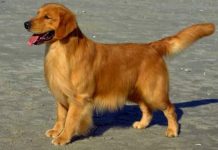Pembroke Welsh Corgi is a small to medium-sized puppy dog with short stature and a sturdy build. Known for his low body, large erect ears, and nimble tail, Pembroke also makes a wonderful companion. The breed is very intelligent, active, and loyal.
This breed and the Welsh Cardigans are often confused, despite the fact that they are separate breeds. Pembroke Corgis have slightly smaller breasts than Cardigans, their ears are more energetic, and they have short dangerous tails (as opposed to a long cardigan tail).
Description
– Male dogs of this breed can reach a height of up to 30 centimeters.
– Female dogs of this breed can reach a height of 25 centimeters.
– Male dogs of this breed can weigh up to 11 kg.
– Female dogs of this breed can weigh up to 9 kg.
– The lifespan of this breed of dog is from 12 to 15 years.
Temperament
The Pembroke Corgi is one of the “vocal” dogs that tend to bark at anything and everything. Although they are intelligent, they can also be stubborn. If they start making a mess in the house, it is recommended to train with the help of a cage, but in consultation with a professional trainer.
Their strong instinct, when they pushed the herd, can lead to them pushing the children in the game as well. They are prone to overeating, so food intake should be carefully monitored. Although they are small, they have a lot of energy and need daily healthy activity.
To get a healthy dog, we advise you to find a good and serious breeder, who will show you that the puppy’s parents have been tested for certain diseases. That way you will know that your puppy is healthy and of good temperament.
Although they are still used as working dogs, nowadays you will most often see them in the role of family pets. Corgies are known for being gentle, loving, intelligent, but with a certain stubborn and independent trait. They are easy to train but don’t expect them to be subordinate to you. They just like to think “with their head”.
Although they want to satisfy their owners, during the training, their biggest motivation is food. But be careful: they love to eat and will become obese if you don’t control them.
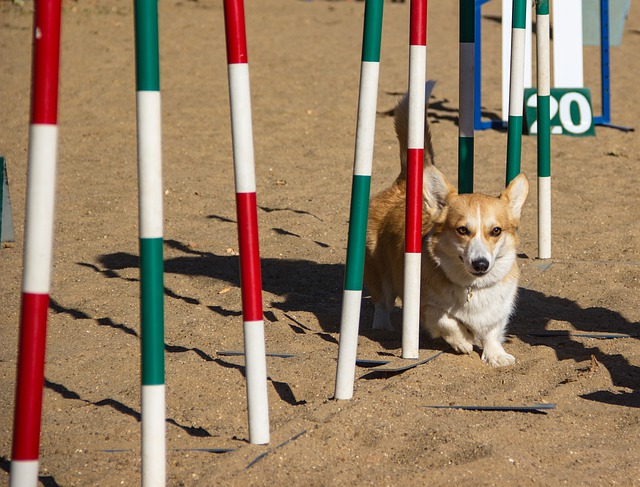
They are real guard dogs. They are suspicious of strangers, so even though they are small, they will warn you with their barking if they feel that someone or something is endangering their home and family.
Like all dogs, they need early socialization – exposure to different sounds, environments, situations, people. Timely socialization helps the corgi puppy grow into a well-formed dog.
Athletically and surprisingly fast, Pembrokeshire corgis were bred as herd keepers and required daily activity. Even so, if they have psychic stimulation every day, they will be perfect pets.
Because of their short legs and long backs, you should not allow them to jump from and onto the couch or from some height, so as not to injure themselves (fractures are common in such situations).
Pembrokeshire Corgis can easily adapt to life in both the countryside and the city. Although their layers of fur are resistant to weather conditions and in most climatic conditions, this breed is very people-oriented and likes to be in the company of their family, so never leave them alone and do not allow your corgi to live in the yard, away from you. In case of loneliness, they can start behaving destructively and aggressively.
They are often called “big dog in a small body”, most likely because of their playful nature and great loyalty. They are very sensitive and happy when they have the attention of their family and the love with which they shower them. This is definitely a race that loves the game and will enjoy it for hours. It is definitely recommended to people who will be able to provide it to them.
If you want a small, inconspicuous, but cheerful friend, the corgi is your soulmate. He may be miniature compared to other dogs, he may not be as tall as the big breeds, but he has something that will make you love him the moment you see him, and that is – a big heart. The owners of this breed jokingly know how to say that it is incomprehensible how his huge and warm soul fits into such a small body.
Health
Welsh Pembroke Corgi is, in general, a healthy dog breed, but they, like other dogs, are prone to certain health problems. Not all of them will get all or some of these diseases, but it is good to be familiar with them if you have a dog of this breed. If you are buying a dog, find a trusted breeder who will show you that the dog’s parents have been tested for certain diseases. In this breed, you are looking for confirmation that the dog does not have dysplasia of the hips, elbows, hypothyroidism, Von Wilbrand’s disease, as well as confirmation from an ophthalmologist that the eyes are in a normal condition.
Hip dysplasia is an inherited disease that represents the improper development of the hips when the bony, fast-growing part of the hips is “loose”, ie. when it is not sufficiently strengthened by muscles, tendons, ligaments… Hip dysplasia is hereditary but can be exacerbated by certain factors such as rapid growth due to improper diet, obesity, injuries caused by jumping or falling, and walking on slippery surfaces (avoid your dog walks on the parquet because it can damage his joints and contribute to dysplasia).
Some dogs have symptoms such as limping or pain in one or both hind legs, while others will have no symptoms. As a dog gets older, arthritis can develop. The diagnosis is made by X-ray of the hips, and in consultation with a veterinarian, you will know what is the best type of treatment for your pet – it can be medication or even surgery. Dogs with dysplasia should be excluded from further breeding.
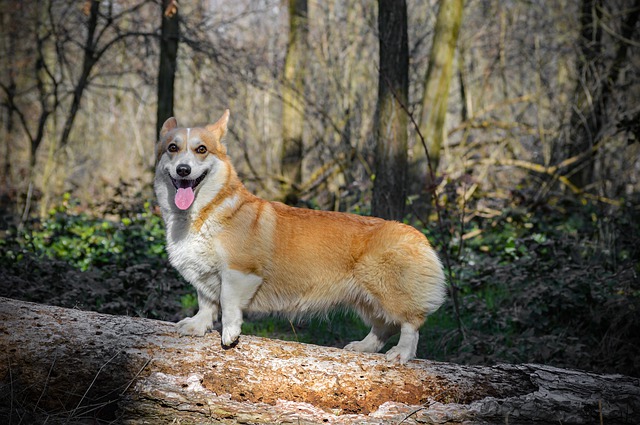
Cataract – this disease causes opacity of the eye lens, which further results in poor eyesight. The dog’s eye will be blurred. Cataracts usually occur in old age and can sometimes be removed surgically to improve vision.
Cutaneous asthenia, also known as “Ehlers-Danlos” syndrome, dermatosparaxis or dominant collagen dysplasia is a condition that causes a connective tissue defect, so that tissue becomes brittle, loose and stretched. Blood vessels are also affected, which leads to the formation of excessive bruises and blood blisters.
Cystinuria is a condition in which high amounts of protein (called cysteine) are excreted in the urine and stones can form. The problem mainly occurs in males.
Degenerative myelopathy is a progressive degeneration of the nerve and supporting tissue of the spinal cord in the lower back. This causes limping of the hind legs, weakness, and possible paralysis, and is often misdiagnosed as a disease of the spinal disc.
Epilepsy is a neurological condition that is often, but not always, hereditary. There is idiopathic and symptomatic epilepsy. You will recognize the attacks by the unusual behavior of the dog, fast running as if someone is chasing them, stumbling, hiding. The characteristics of a partial attack are braking, tilting of the head, vomiting, convulsions of the whole body, inability to swallow the dog, which results in the appearance of white foam on the mouth. With a major attack, the dog loses consciousness.
The attack can last from a few minutes to 48 hours. When it comes to an attack that lasts shorter, the dog will behave normally after that, while in the second case he will be disoriented and upset. Seizures are really scary and stressful to watch, but the long-term prognosis for idiopathic epilepsy is good, so if you notice any of these symptoms, take your dog to the vet immediately, so that he can start with adequate therapy as soon as possible.
Intervertebral disc disease – due to their long backs, corgis are prone to spinal disc ruptures. This may be due to genetics, improper movement, or falling/jumping to and from the furniture. Back problems include the inability to lift on the hind legs, instability, weakness, paralysis, and sometimes loss of urination control.
It is important when holding your corgi, that you always support its hind and front legs. If this problem occurs, treatment may include keeping the dog in a cage (due to movement) and anti-inflammatory drugs, as well as surgery to remove the spinal discs that are causing the problem, and even putting the animal in a wheelchair. Some owners have found that it can help when they take their pets to a chiropractor who has experience working with dogs.
In any case, if you notice any of these symptoms, take the dog to a veterinarian immediately, so that a diagnosis can be made in time.
Progressive retinal atrophy is a degenerative disorder of the eye that, in the end, causes blindness due to the loss of photoreceptors in the back of the eye. This disease was discovered long before dogs began to show any signs of blindness. In the early phase, sick dogs lose their sight at night, and later, as the disease progresses, during the day.
However, with the use of their other receptors, these dogs can live an absolutely happy life, just help them and try not to change the arrangement of furniture often, in order to get used to the existing environment. Every responsible breeder will have a certificate from an ophthalmologist, and if the individual develops this disease, such dogs will not be further bred.
Von Wilbrand’s disease is an inherited disorder that can cause mild to moderate-severe bleeding, as well as prolonged bleeding time. So, the main symptom is excessive bleeding after an injury or surgery. Other symptoms include nosebleeds, bleeding gums, prolonged bleeding during tropical heat, prolonged bleeding after the female is injured, or bleeding in the abdomen and intestines.
It is usually found in dogs between the ages of three and five, and there is no cure, and currently the only treatment is a blood transfusion from healthy dogs. Research is underway for new treatments, including some medications. It can be kept under control with medications that include cauterization, wound healing, transfusion before surgery, and avoiding certain medications. Most dogs with Von Wilbrand’s disease can live a normal life. Affected dogs should not be further bred, and the veterinarian will make a diagnosis based on the test.
Retinal dysplasia is an abnormal enlargement of the retina. Sometimes the retina separates and then blindness occurs.
Patent ductus Arteriousus (PDA) with pulmonary hypertension is a congenital defect of the vascular system. When, after the birth of puppies, the dustus arteriosus (the blood vessel that connects the pulmonary artery) remains open, then a large amount of blood reaches the lungs. It is usually detected in puppies during a veterinary examination and is a rare part of PDA disease. PDA disease can be surgically cured.
Care
Pembroke corgis are lined with double fur, with a thick undercoat in a longer upper coat. They shed constantly, with increased hair loss at least twice a year. They can be found in red, sable, tricolor, yellow-brown, usually with white markings. Body hair length varies. Some of them have soft fur – with excess hair on the ears, chest, legs and paws, and many have what is called a “fairy-tale saddle”, over the back. There is even a legend for their mark on the back, and according to one, the fairies brought the Pembroke to their native land of Wales.
You will easily brush them, but shedding can become a problem if you do not continue to maintain the fur, especially during the season. At the time when their undercoat falls the most, they should be combed daily.
Bathe them only when needed, and many people have noticed that regular bathing helps reduce shedding.
Brush their teeth at least two or three times a week to remove tartar and bacteria lurking inside your mouth. Daily brushing is even better for preventing gum disease and bad breath.
Cut your nails as needed, preferably once or twice a month. If you hear your nails walking on the floor, it means they are too long. Short nails keep the paws in good condition and prevent pain and injuries in your pet. They also protect your feet from scratches when a merry corgi jumps on you from happiness.
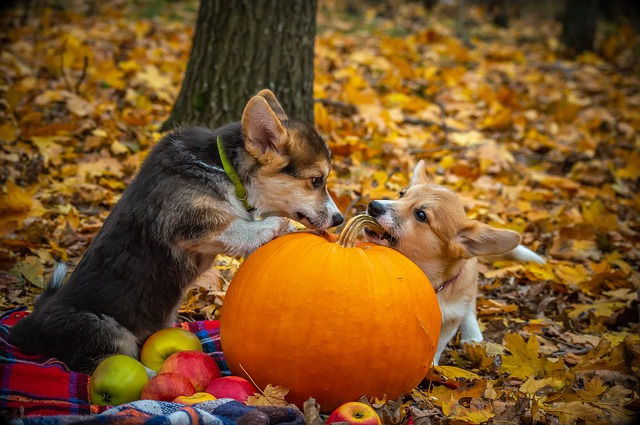
But be careful – dogs have blood vessels on their nails, so if you shorten them too much, bleeding can occur. If you are not sure how to do that, it is best to take your pet to the vet, so that you do not accidentally injure him when cutting your nails.
Check your ears every week for dirt, redness or bad breath, which indicates an infection, and then wipe them once every seven days with a cotton ball soaked in a gentle, PH-balanced ear cleaner to prevent potential problems. Do not put anything in the ear canal, just clean the outside.
Two important factors in dogs are checking the paws (where they are sensitive) and the mouth. Don’t forget that you can do a lot to prevent certain conditions.
While brushing them, pay attention to whether they have any wounds, rashes or signs of some infections such as redness, sensitivity or inflammation of the skin, ears, nose, oral cavity, eyes and paws.
The eyes should be clean, without redness. These checks will definitely help you spot some health problems in a timely manner and thus help your pet.
Get used to all these actions from an early age, with praise and rewards, so that when they grow up, they will see it all as a positive experience.
Feeding
It is important to know and be well informed about the food you are eating because the most important thing for each of them is that the dog gets a sufficiently balanced intake of proteins, minerals, vitamins, and fats.
How much an adult dog eats depends on his age, metabolism, size, and activity levels. Like humans, dogs are individuals for themselves. It is logical that a dog that is more active will receive a different type of food than a dog that stays up all day.
Basically, when you buy granules, if you do not take a bag on which, per kilogram, the recommended daily dose is written, ask the seller in the Pet Shop to tell you how much you should give, depending on the weight of the dog, but also the age.
Keep and maintain their good weight by measuring food and never leave a full container throughout the day. If you can see the dog’s ribs, he is malnourished, and if the ribs are not visible, but you feel them by touch without pressure, the dog has a normal weight. If there are layers of fat around the ribs, your dog needs to go on a diet. For more information on nutrition, it is best to ask your veterinarian to be sure which food is best. It is better to divide a meal into two smaller ones than to give a large amount at once. Pembrokeshire Corgis love to eat, so if you indulge and give them a chance, they can become obese very quickly.
Puppies
From the first months, it is necessary to teach puppies to communicate with humans. Dogs of this breed love to destroy everything that comes into their eyes, they do not do it out of evil, but because they have a lot of energy and strength. If owners want to keep valuable and important things intact, they must be kept out of the reach of dogs.
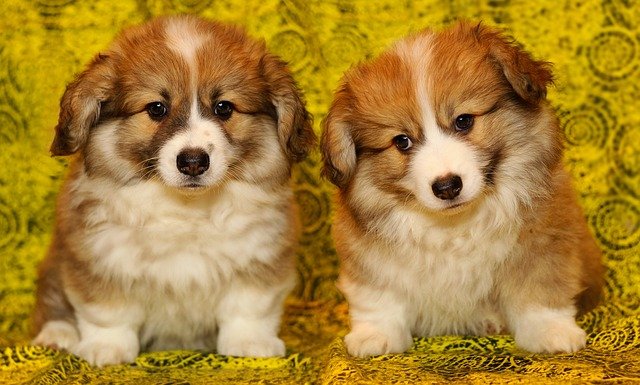
When traveling to Corgis, they do not want to carry out human commands, they prefer improvisation. They often move around the yard or around the furniture, highlighting picture eight, it seems to them a lot of fun. With their races, they expend a lot of energy and strength, that is, they want to eat a lot and often. However, they should be fed in moderation, avoiding overeating, as this breed is prone to obesity.
History
The Pembrokeshire Welsh Corgi, as the full name of this breed reads, originates from Pembrokeshire (Wales) and is truly an enchanting dog. There is a myth that the corgi was created by fairies and elves.
According to a Welsh legend, two children who were guarding their family’s herd went out into the field when they found a pair of puppies. At first, the children thought they were handcuffs, but recognizing something different in them, they took them and took them home. Their parents immediately saw that it was not foxes, but dogs, so they told their children that the houses were a gift from the fairies who lived in the woods. The fairies used them to haul cargo and take them with them into battle. As true proof that the corgis really served as magical riding creatures, the parents showed traces on their backs where a fairytale saddle was drawn. The children were thrilled and took care of the dogs.
As they grew, they became valuable companions and learned to help children around the herd. For those who do not believe in fairy tales, there are historians who believe that they are descended from the Walhands, Swedish shepherd dogs that the Vikings brought to Wales in the 9th and 10th centuries. Others, however, think that they originated from dogs brought to Wales by Flemish weavers in the 12th century.
In any case, this race has a rather mystical historical pedigree. Farmers who kept working dogs in the past bred the best ones for the jobs they were engaged in. However, they did not keep the best records during mating.
During the 1920s, the UK Kennel Club recognized the corgi breed as a purebred. When they were first exhibited in 1925, they were called “Welsh Corgis”. At that time, the Pembroke and Cardigan varieties were shown in the same class as one variety.
Then, in 1934, the Kennel Club recognized them as two separate breeds. In the United States, Welsh Pembrokeshire Corgis were introduced in 1936. They were slowly becoming more popular there, and today they are among the 50 most popular breeds.
What is especially interesting is that Her Royal Highness, Queen Elizabeth, is their admirer, and she received her first corgi in 1933 from her father, King George VI. Her dog’s name was “Rosavel the Golden Eagle” and he was a faithful friend of Queen Elizabeth and her sister Margaret. Since then, the queen has fallen in love with small dogs and now has a couple of them walking around the baking palace.
As we have already mentioned, Welsh corgis come in two variants: Pembroke and Cardigan. They were registered as one species in 1934 by the American Kennel Club (AKC), although many breeders believe that these two breeds were developed separately. Both varieties have a similar head, body, level of intelligence and ability to swim, but Cardigan’s bones are a little bigger and heavier than in Pembroke. For most of us, the easiest way to tell the difference is to look at their tails. In Cardigan, the tail is long and lush, and in Pembroke it is “glued”, ie. it looks as if it doesn’t exist (This is how you remember: Pembroke is connected to the body, and Cardigan’s is like a garment with long sleeves – a cardigan).
The Pembrokeshire Welsh Corgi, according to the AKC, is the smallest of all sheepdogs, and are recognized by the United Kennel Club. Their hair comes in several colors, usually with the addition of white markings on the legs, chest, neck, muzzle, and abdomen. They can also have narrow patterns on the head.
Their head is fox-like, their eyes oval and dark, and their ears erect. The official standard of the AKC is maintained by the Pembroke Welsh Corgi Club of America.


